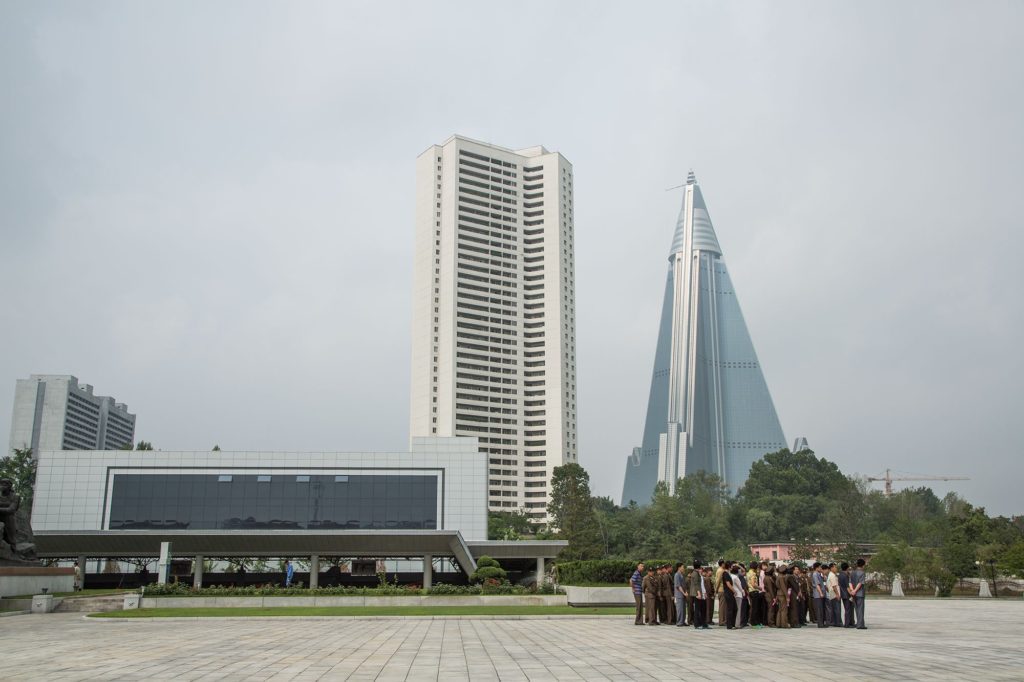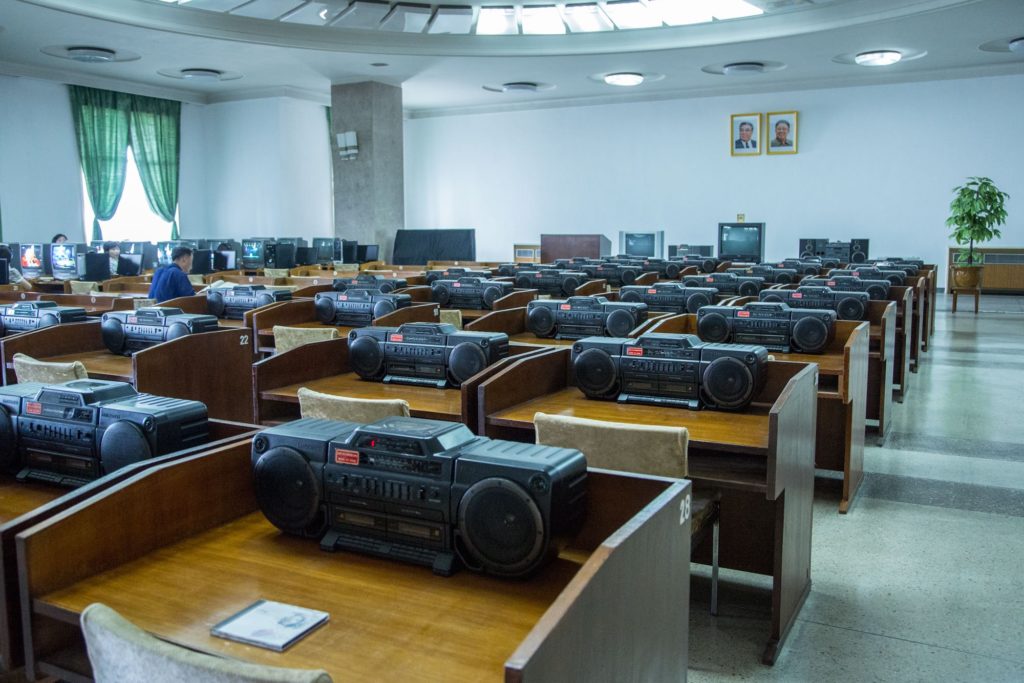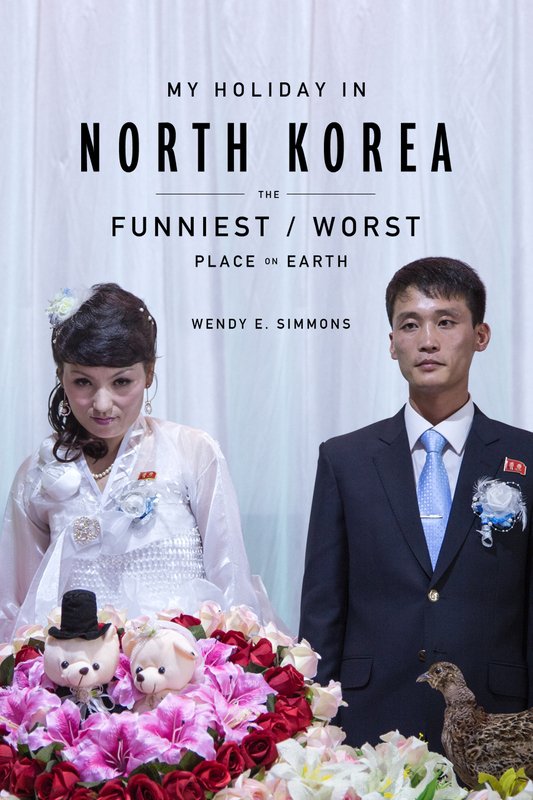Travel writer Wendy Simmons had been to nearly 100 countries and finally obtained permissions to visit North Korea. This is something very few Americans have ever done. After a bizarre ten days in one of the most unknown cultures, Simmons returned and wrote this book.
Structured as a travelogue, she outlines each day’s excursions — each planned to the second by the officially assigned tour guides — with her observations and memories. Because of North Korea’s (which she affectionately nicknames NoKo) stringent restrictions on electronics, phones, cameras and even paper and pen, Simmons took notes and snapshots when she could.

“Typical occurrence: You arrive anyplace in NoKo; no one is there. Suddenly a swarm of people dressed in decades-old clothing arrives, organized in close formation, five or six people across, and as many deep, walking in lockstep. When I’d ask Older Handler why, she’d deny it was happening, even as we stood watching it. The infamous, pyramid-shaped Ryugyong Hotel can be seen in the background.”
She learned to grab pictures as best she could, with a tacit nod from her handlers. She also became used to asking straightforward questions and getting non-answers. As the trip wears on, Simmons becomes more punchy.
I didn’t remember selecting “Concrete Wall” from the list I’d been given when choosing activities for my customized itinerary. And a concrete wall certainly didn’t sound like something that would normally have piqued my interest (akin to choosing “watch paint dry”). But it was on our agenda for the day after the DMZ, and quite frankly it sounded better than some of the other shit I’d been dragged around to (can you say, Victorious Fatherland Liberation War Museum?), so it felt like a win.
For a minute it seemed like Fresh Handler was trying to talk me out of visiting the Concrete Wall—not that I was dying to visit it, or even had any idea what the Concrete Wall was, aside from the obvious.
FRESH HANDLER: You want go Concrete Wall?
ME: I don’t know. What’s the Concrete Wall?
FRESH HANDLER: It’s a concrete wall.
ME: I don’t understand. It’s just a concrete wall?
FRESH HANDLER: Yes.
ME: Why would we go look at a concrete wall?
FRESH HANDLER, giggling, shrugging shoulders while making a face that says, “You got me…I don’t know why we’d go look at a concrete wall”: You can’t see wall.
ME: What do you mean we can’t see the wall? I don’t understand. I thought you said we were going to see a concrete wall?
FRESH HANDLER: Wall is very far. You can’t see it. You look at wall through hole.
ME: What do you mean we look at wall through hole?
FRESH HANDLER, giggling, covering her mouth with her hand while looking to the sky for the right word: Ahh, wall is very far away. You look through, ahh…
ME: Binoculars?
FRESH HANDLER, delighted: Yes! You look through binoculars to see wall. But can’t see wall.
Okay, got it. We look through binoculars to see a concrete wall that we can’t see. I’m so happy I understand her that I momentarily forget I don’t understand her.

“The boom-box ghetto inside the audio/video room at the Grand People’s Study House, where I was forced to listen to a bootleg Madonna CD as proof NoKo owns all the music in the world.”
The entire book is filled with strange, synthetic interactions. Simmons recounts her increasing frustration at being unable to make any real, human connections, and her realization that a small part of her began to get used to the mock reality. Her survival required her sanity to accept the insane, to make it okay, so she could just keep going.
Imagine living that way your entire life.
View more photos at myholidayinnorthkorea.com.
Many thanks to Kelly for the review copy.
__
Paperback: 312 pages
Publisher: RosettaBooks; 1 edition (May 3, 2016)
Language: English
ISBN-10: 0795347049
ISBN-13: 978-0795347047
Product Dimensions: 6 x 0.6 x 8.9 inches

